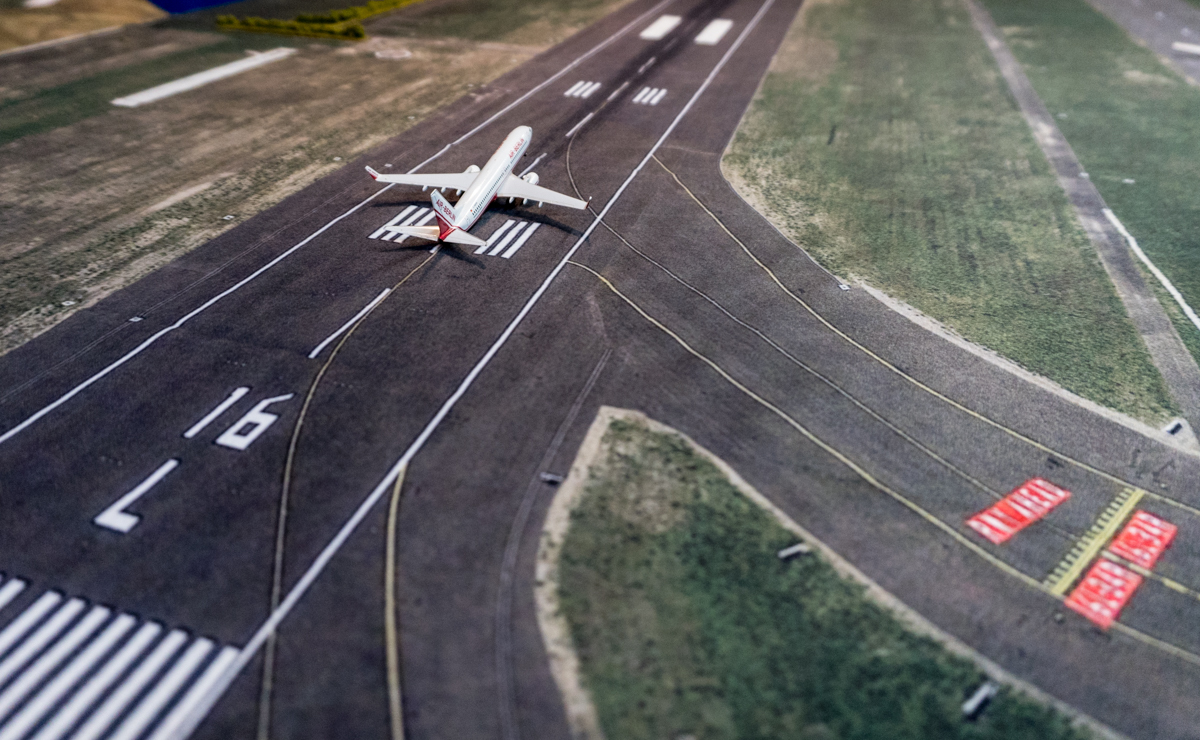

The demarcation bar is yellow and is not on or part of the runway. The yellow demarcation line separates the blast pad, taxiway, or a section of runway from a displaced threshold. The demarcation bar is a yellow stripe that separates the displaced threshold from the blast pad, stop way, or taxiway that precedes the displaced threshold.Ī demarcation bar is always associated with a displaced threshold.įigure 4.

Jet exhaust is very harsh, and over time can damage the area surrounding the runway (i.e., the grass, dirt, gravel, etc.)īlast pads protect the area immediately behind the runway threshold.Ģ.

Aircraft Taxiing into Position for Takeoff (We know it is taxiing because it has crossed the hold line.) Blast pad / Stop Waysįirst, to the aircraft’s right is the blast pad (Figure 3): the purpose of blast pads is two-fold:ġ.

Related Article – Instrument Proficiency Check (IPC): 4 Things You Need To Know Runway Features and MarkingsĪssume the aircraft will taxi onto the runway and turn left to move into the takeoff position (Figure 2). To get to the runway, crews move along the assigned taxiways, following the yellow center stripe and all ground control instructions and taxiway signs until they reach the hold line at the assigned runway.Īlong the way, crews must stop at all hold lines unless the ATC Ground Control clears the aircraft to move. Taxiways and any other non-runway surfaces are painted with yellow markings, while only runway surfaces are marked in white. To guide crews along this route, taxiways and runways are marked with standardized markings painted on the paved surfaces and further guided by signs. General aviation aircraft typically call Ground Control for taxi instructions.ĭuring this period, the pilot has received taxi instructions as to which runway to use and which taxiways to take to get to the runway. When an airline aircraft is ready to leave the gate, the crew gets permission for “pushback.” The aircraft is guided by ground personnel away from the gate to a position where the pilots can taxi forward safely. Movement in the parking area is controlled either by Ground Control, or at larger airports local ramp controllers. There are the parking ramps, taxiways, and runways. Basic Airport Layout (Partial View of JFK International) Kennedy International Airport (Figure 1), we can see examples of most major portions of the airport. Related Article – 5 Best Low Time Pilot Jobs With 250 Hours Airport Overview Here we describe the runway markings in approximately the same sequence the pilot would see them when preparing to takeoff. Under normal operations, this guidance is mandatory, so pilots must recognize and know what these markings mean. As pilots taxi to or from takeoff or landing, especially at major commercial airports, markings on the taxiways and runways provide important guidance.


 0 kommentar(er)
0 kommentar(er)
